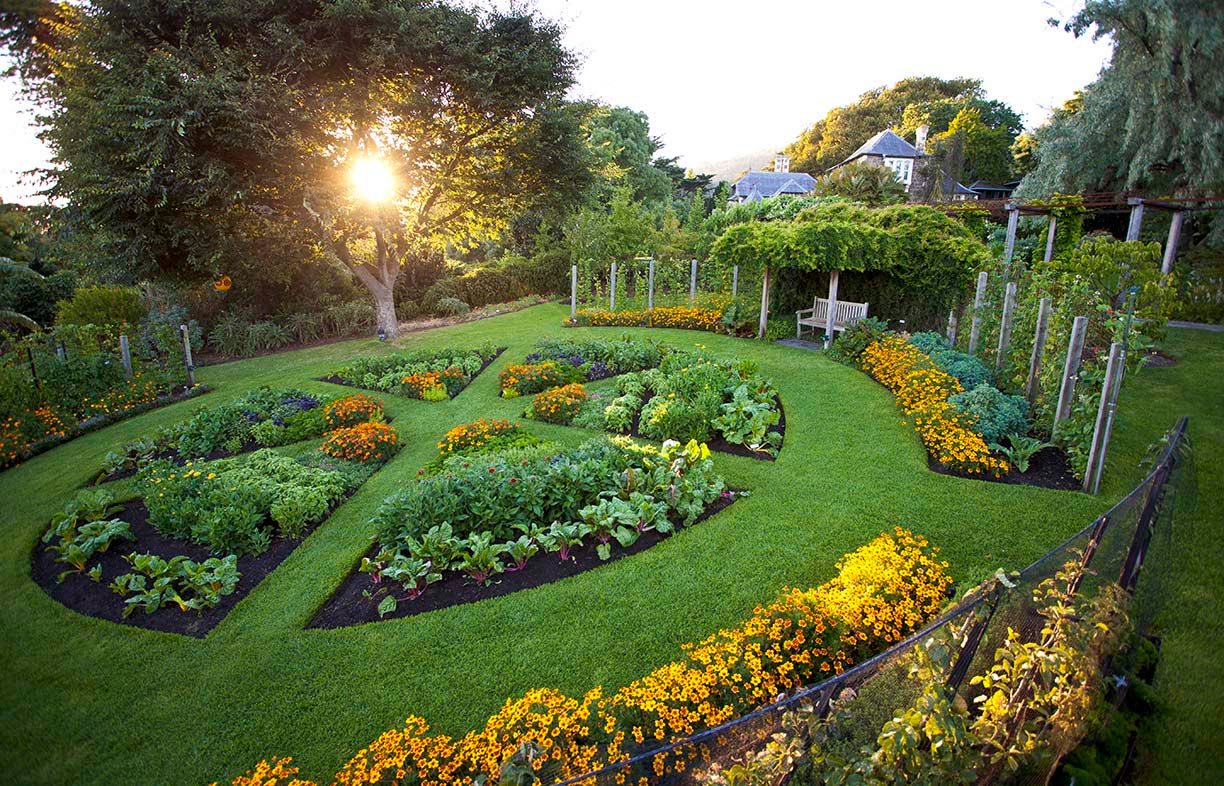Grass is green

Lawn can get a bad rap – some tear it up for gardens while others replace it with fake grass. But in the world of Diggers Club veteran, Keith Edwards, when it comes to turf there are only pros and no cons.
A couple of years back I made significant changes to the landscape of my home. The exotic trees and shrubs were replaced with plantings that would give me a return with fruits and vegetables that, in the long term, could be eaten straight from the plant and the excess preserved for the rest of the year.
Part of the lawn made way for raised vegetable gardens, leaving just enough space for the grandchildren and the dogs to play.
There were times that I looked at the remaining lawn areas, including the nature strip, with thoughts of what better alternatives there could be than constantly bringing out the mower. Could it be totally planted out, paved, or artificially turfed? Could the verge be turned into a garden or, better still, a productive vegetable garden? But before acting, I thought back to some far-flung research I once read, which measured the benefits of lawn.
Years ago, I was fortunate to have worked with the Department of Agriculture, in turf research, and was lucky to work with and meet some lateral thinking people who saw turf, and its contribution to our environment, in ways that gave me a better understanding and appreciation of its role.
Popular lawn types have changed over time to suit lifestyles and climate. We now commonly see grasses that creep across the soil, rather than the more conventional upright growing varieties such as bluegrass, ryegrass and tall fescue that gave lawn a bad name. These upright types require the mower be set at its highest setting to allow the root system to reach deep down into the cool, moist soil. However, most people prefer the look of a low-cut grass sward, so instead lower the mower cutting height, which has the affect of killing off the grass. Few people realise the shorter the grass on top, the shorter the root system below must be to sustain that growth. A couple of hot days without water and the root zone’s in the dry area and it’s game over for this type of grass.
The ‘creeping’ type of grass, with varieties of kikuyu, buffalo and couch, all of which are commonplace in most of our landscapes today, perform so much better and are more forgiving to being low-cut. These varieties perform extremely well all over Australia, and are best sourced as Turf, as they may be problematic to sow as seeds.
The benefits of lawn are enormous in the personal landscape of our homes.
Turf grasses play an important part in controlling our climate. Overlooked or perhaps never imagined as being so, they act as organic air conditioners. A 15 x 15 metre (225 square metres) area of green lawn will produce approximately 28kW of air conditioning (a complete home air conditioning system can produce up to 14kW of cooled air).
The lawn will be approximately 10 to 14 degrees Celsius cooler than a paved surface, and a much more pleasant experience to walk or sit upon – especially in urban areas where temperatures can be as much as 5 to 7 degrees hotter than nearby rural zones.
There are also many environmental benefits of lawns that many don’t consider: they absorb noise, remove dust and smoke particles from the atmosphere, absorb sulphur dioxide and carbon dioxide, effectively control erosion by intercepting rain and slowing its flow before it reaches the soil. Dense grass generates oxygen, for example that 15 x 15 metre area of lawn would produce enough oxygen for a family of four. Lawns can purify water – they filter water as it leaches through the rootzone and then down into the underground aquifers, protecting the microbes that will help break down chemicals into harmless materials. They also provide ecosystems that can support an abundant population of earthworms estimated at 200 to 300 per square metre; this activity increases the macropore space within the soil that results in higher soil water rates and its water retention capacity.
A green lawn doesn’t just look and feel great, but provides people and those living organisms we don’t consider often enough, with so many benefits. My lawn is here to stay.

Cleaner lawn care
Regardless of the type of lawn, it will always need mowing at least a few times a year. The conventional petrol lawnmower is very polluting, with no emission controls, and fuel vapours are toxic and potentially carcinogenic. Rechargeable electric mowers are not only fume-free, you can charge them from solar energy for completely emission-free mowing. There are rechargeable mowers for all lawn sizes, from little lightweight machines like the Ozito PXCLMK-218, to beefier machines like the 82V Victa Power Cut Mulch Or Catch lawn mower or Dewalt XR brushless mower. Indeed, there are options now to suit almost any lawn size and type, so there’s no need to be breathing toxic fumes or messing with flammable fuels.
The same applies for other lawn care machines such as line trimmers, with models equal to or better than their petrol counterparts, just quieter and safer. And the great thing is that these machines are now much cheaper than they used to be, and are available at most decent hardware stores.
Turf types
Even if you can’t afford to purchase enough to do your whole project, I would suggest it is best to purchase a few rolls of turf and cut them into 100mm squares and plant them lightly into the soil at about 1 metre apart, water and feed well and with time they will creep together and form a full lawn – a great cheaper option, best done in the warmer months. Named varieties of these turf types are, palmetto buffalo (a softer leaf form, great for lying and playing on), sapphire buffalo, prestige buffalo, couch varieties QLD blue, Aussie blue, tropika blue couch, wintergreen, stadium sports and Santa Anna couch. For kikuyu varieties look for kendra and oakridge. All of these grasses are very tough, but for constant wear and tear, choose varieties of couch and kikuyu; the most drought tolerant being kikuyu. The best for shade tolerance, low maintenance and all year colour would be sapphire buffalo.
 Outdoors
Outdoors
Saving stormwater
You can do a lot around your house to prevent stormwater runoff, simply by opting for permeable surfaces when landscaping.
Read more Outdoors
Outdoors
Swimming sustainably
Australian homeowners have increasingly been turning to natural pools as an eco-friendly alternative to traditional swimming pools. Jacqui Hagen dives in.
Read more Outdoors
Outdoors
Sweet spot: Sustainable midrise for healthy, nature-positive communities
An alternative to both highrise living and urban sprawl, well-designed medium density is the way to go for balancing the needs of people and nature, says ecologist Sarah Bekessy.
Read more

